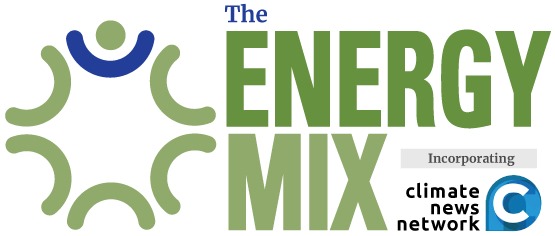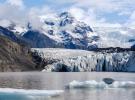What More Is There to Say About the LA Wildfires? And What Do We Do Next?
The horrifying, heartbreaking images from the wildfires encircling Los Angeles remind us again that no one is safe in a global climate emergency. Here’s how we find common ground to take action
Scenes of unimaginable destruction, with whole neighbourhoods burned to the ground. Exhausted firefighters. Fire hydrants running dry. Comparisons to the firebombing of Dresden and the destruction of Pompeii. And an immediate, secondary firestorm of wacky conspiracy theories and political finger-pointing.
With meteorological agencies reporting that 2024 was (yet again) the hottest year on record, Los Angeles is being overwhelmed by the biggest, most destructive fire in its history, with three active blazes as of Sunday morning consuming nearly 40,000 acres to the north and west of the city. The city was reporting 16 dead and more than 200,000 evacuated, and the death toll was expected to rise once firefighters could conduct house-to-house searches, particularly in the wake of the massive Palisades and Eaton fires.
We’ve been inundated with news and social media on the human toll of the fires, the unique health dangers of urban wildfire smoke, the drastically heightened risk when fires cross the wildland-urban interface, the homes and lives and priceless mementoes obliterated in a heartbeat by fires that moved as fast as three football fields per minute. And we can already connect the scale of the devastation to dry conditions over the last several months, low humidity, and hurricane-force Santa Ana winds that sometimes exceeded 130 to 160 kilometres per hour.
“Meteorological conditions similar to those triggering [the] January 2025 California wildfires are up 5°C warmer, 3 mm/day (up to 15%) drier, and up to 5 km/h (up to 20%) windier in the present compared to the past,” writes ClimaMeter, a rapid attribution service based in Paris. Those factors classified the LA fires “as an event driven by very rare meteorological conditions whose characteristics can be ascribed to human-driven climate change.”
Much of the news reporting has focused on massive insurance losses in an area where companies like Standard Life have already been pulling back their coverage. “Climate change is showing its claws,” reinsurance giant Munich Re headlined last week, in an annual review that cited the US$140 billion in losses that insurers had to cover last year—and that’s just the households and businesses that had insurance when climate change came to call.
Don’t Confuse Us With Facts
But none of that has stopped a predictable storm of misinformation and climate denial directed at state and local governments, blaming the fires on everything from endangered species protection to job equity initiatives to Russia’s war in Ukraine. (Not much word yet on secret space lasers, but the night is young.) It’s hard to imagine a universe in which Donald Trump would have taken the high road, rather than renewing his longstanding grudge with California Gov. Gavin Newsom.
“Several of the statements made by incoming president-elect Trump, as well as Elon Musk, were riddled with both misinformation about our water management system as well as about the fires,” Ashley Overhouse, a water policy advisor for Defenders of Wildlife, told Inside Climate News. “That kind of misinformation is not only incredibly inappropriate here, it’s also dangerous.”
The explosion of unfounded conspiracy theories had locals turning to a non-profit tracking app to get a clear picture of what was going on.
As climate author and Third Act co-founder Bill McKibben writes in his The Crucial Years newsletter:
How Not to Connect the Dots
In 10½ years as a climate publisher and journalist, I’ve come to dread having to assign or write the stories that I think of as the “weather report”.
They’re the horrifying, heartbreaking accounts of the wildfires and storms, flooding and drought rolling over households, communities, regions, and local ecosystems across the globe, where hundreds of thousands or millions of lives can be transformed or lost in a matter of hours or days. Brought to us largely by an unapologetic fossil fuel sector that knew about climate change in the 1970s, chose not to let the rest of us in on the secret, and is proudly promising to increase production of oil, gas, and coal to this day.
But these days, what I dread the most is the standard trajectory that each of these massive disasters follows, the sense that every new local tragedy keeps driving us apart, rather than bringing us together around a shared set of facts and solutions.
As a climate hawk, I know full well what has polluted our politics and our public conversation about climate change—tens or hundreds of millions of dollars will buy you a whole lot of confusion, misunderstanding, and resentment, and that’s exactly what the fossil industry has been working at for decades. But that’s not a useful perspective when we’re trying to connect with anyone who isn’t already inside the “bubble” of climate change concern.
And it’s especially unhelpful for people who are right in the middle of their own, local climate disaster. I’m lucky enough that I’ve only learned this second hand. But when you’re still trying to figure out whether your home and workplace have been destroyed, whether your pets and livestock survived, whether you’ll be able to get home anytime soon—or anytime ever—the last thing you need or want is to be reminded that your life has just been turned upside down by climate change.
But that reality undercuts an essential part of the theory of change that has guided climate communicators for decades. As Bloomberg opinion columnist Lara Williams writes:
So. We know that climate impacts are cascading, the message isn’t getting through, and time is running short. What will it take to change the conversation, find common ground, and build trust?
Time to Stop Arguing (It Isn’t Working)
Out of the avalanche of wildfire coverage and commentary over the last week, I keep turning back to two posts that showed up in my LinkedIn feed—one from biodiversity brand strategist Diana Myers, the other from San Francisco-based web designer Akhila Kosaraju.
Myers recounts how she “decided to just listen” after realizing how much it tired her out to argue with a close relative about the reality of climate change.
“Climate deniers love to blame the government. Not for climate change, but for other things,” she wrote. “Climate activists and biodiversity builders, on the other hand, love to focus on solutions.” So “what if there’s a way to bridge the gap via shared values instead of talking over each other?”
Myers lists clean air and water, healthy, nutritious food, community protection and empowerment, biodiverse forests and oceans, and safe, healthy children as goals that pretty much everyone can share. And if that’s right, she says:
Pulling the Right Levers
Kosaraju’s post gets at how to move from sympathy to empathy and action with people who aren’t on the immediate front lines.
“Climate change will manifest as a series of disasters viewed through phones with footage that gets closer and closer to where you live until you’re the one filming it,” she writes, citing an unattributed quote circulating widely in the wake of the LA fires.
But even so, “climate change has a relatability problem,” Kosaraju says. “Indians can’t relate to catastrophic wildfires in the U.S. during winter. Americans can’t relate to floods in Pakistan that crashed its economy. Europeans can’t relate to droughts in Kenya that starved millions.”
And once again, the time to expect people to respond and take action is not when they’re the ones filming their own disaster in real time.
The best response, Kosaraju says, is to get educated about climate change, figure out the biggest levers you can pull to make a difference—then pull them.
Kosaraju’s wise advice points to one lever we should all seriously consider and one that we should be careful to avoid.
For some time, our team has been working with a strange but inevitable reality in a climate fight that is necessarily about equity, about keeping at it until no one else is left behind. The climate emergency and climate solutions belong to all of us. And yet, for better and for worse, some of us can have disproportionate impact in driving faster, deeper emission cuts and building climate resilience—by virtue of where we’re situated, who we can connect with, or as Kosaraju says, the levers we can pull.
That means the maximum influence she’s urging us all to seek out will often be found in our work, not primarily in our homes or neighbourhoods. Anyone who works for a power utility, a financial institution, or in and around city government…anyone who manages a supply chain or who teaches at any level, from junior kindergarten to post-secondary—if your work gives you a unique way to respond to the climate emergency and build practical solutions, that’s the lever to pull first.
Climate Mitigation is the New Adaptation
There’s also one potential landmine that we would all be well advised to dodge. As climate disasters become more frequent and severe, we’re hearing more and more that the effort to shut down the greenhouse gas emissions causing climate change has failed, and all we can do is adapt to the impacts. In August, one leading Canadian climate adaptation specialist took the extreme position that governments should divert funds from emission reductions to focus more on today’s impacts.
The important grain of truth in his argument is that we absolutely need a lot more funding and investment for climate adaptation—in Canada, across North America, and around the world. We needed it yesterday. But not at the expense of the urgent push to drive down emissions.
The problem, of course, is that climate change won’t graciously pause and give us time to accommodate our lives and infrastructure to the impacts we’re already seeing. Average global warming is now in the range of 1.5°C, but there’s enough additional warming baked into the system to get us to about 2.7°—and Donald Trump’s second term could load another four billion tonnes of climate pollution into the atmosphere by 2030.
So yes, governments and private companies are long overdue taking climate adaptation seriously, with the level of investment to show that they mean it. But we can’t ever forget that mitigation is the new adaptation. Otherwise, "we can rearrange deck chairs on the Titanic for a few more years,” University of British Columbia biology and biotechnology professor Miranda Hart told CBC, “but we can't build a society resilient to climate change. It's too powerful and it's too multifaceted."
Cover photo: CAL FIRE/flickr



